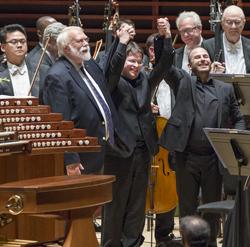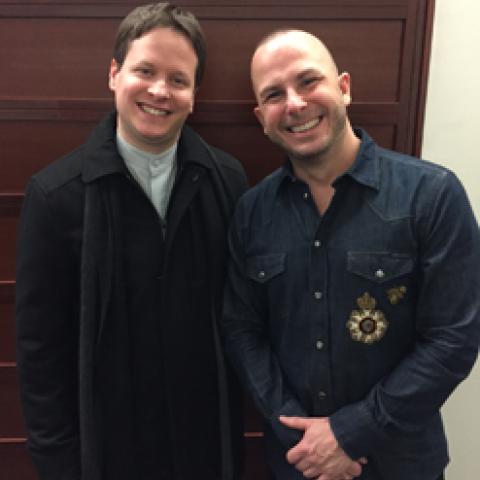
Grammy Award-winning organist Paul Jacobs joined the Philadelphia Orchestra and Music Director Yannick Nézet-Séguin to celebrate the 10th anniversary of Verizon Hall’s Fred J. Cooper Memorial Organ November 17–19. The centerpiece of the program, which consisted entirely of works featuring the organ, was the world premiere of Pulitzer Prize-winning composer Christopher Rouse’s Organ Concerto, dedicated to Paul Jacobs. The work was co-commissioned by the Philadelphia Orchestra, the Los Angeles Philharmonic, and the National Symphony. Samuel Barber’s Toccata Festiva opened the performance and Camille Saint-Saëns’ Organ Symphony concluded the concert.
Verizon Hall houses Dobson Opus 76, four manuals, 125 ranks.
Photo: Paul Jacobs takes a bow with Christopher Rouse and Yannick Nézet-Séguin (photo credit: Jessica Griffin)



